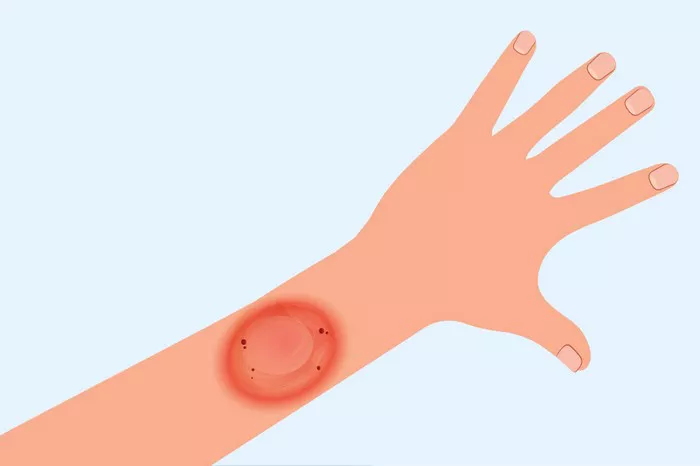Ringworm, despite its name, is not caused by worms but rather by a group of fungi known as dermatophytes. This fungal infection can affect various parts of the body, including the skin, scalp, and nails. One of the most common symptoms associated with ringworm is itchiness, which often presents itself as an initial sensation before other symptoms manifest. Understanding the itchiness associated with ringworm is crucial for effective management and treatment of this common condition.
The Itch: A Prelude to Diagnosis
The journey of ringworm often begins with an itch. This sensation can vary in intensity from mild to severe and may be accompanied by redness and inflammation. The itchiness typically occurs at the site of the fungal infection and may spread to adjacent areas as the infection progresses. While the itchiness associated with ringworm may initially seem innocuous, it serves as a crucial indicator prompting individuals to seek medical attention and undergo further evaluation for a potential fungal infection.
The Mechanism Behind the Itch
To understand why ringworm causes itchiness, it is essential to delve into the underlying mechanisms at play. Dermatophytes, the fungi responsible for ringworm, thrive in warm, moist environments and can easily invade the skin, hair, and nails. Once these fungi establish themselves on the skin’s surface, they begin to multiply and produce substances that trigger an inflammatory response from the body’s immune system.
The immune system’s response to the presence of dermatophytes leads to the release of histamines, cytokines, and other inflammatory mediators. These substances serve to recruit immune cells to the site of infection and enhance the body’s defense mechanisms against the invading fungi. However, they also contribute to the characteristic symptoms of ringworm, including itchiness.
Histamines, in particular, play a central role in the itching sensation experienced with ringworm. These molecules act on specialized receptors in the skin known as histamine receptors, triggering nerve impulses that signal the brain to perceive itchiness. Additionally, cytokines released during the inflammatory response can further sensitize nerve fibers, amplifying the perception of itchiness and discomfort.
The Psychological Impact of Itchiness
Beyond its physiological effects, the itchiness associated with ringworm can also have a significant psychological impact on affected individuals. Chronic itching can disrupt sleep patterns, impair concentration, and lead to feelings of frustration and embarrassment. Moreover, the visible signs of ringworm, such as redness and scaling, may cause self-consciousness and social anxiety, particularly if the infection affects visible areas of the body.
In some cases, persistent scratching in response to itchiness can lead to secondary complications such as bacterial infections and scarring. Thus, addressing the itchiness associated with ringworm is not only essential for relieving physical discomfort but also for preserving overall well-being and quality of life.
Managing Itchiness: Strategies for Relief
Effective management of itchiness associated with ringworm involves addressing both the underlying fungal infection and the symptoms it produces. Antifungal medications are the cornerstone of treatment for ringworm and work by targeting the fungi responsible for the infection. These medications may be applied topically as creams, ointments, or sprays or taken orally in more severe cases.
In addition to antifungal therapy, symptomatic relief of itchiness can be achieved through various strategies:
1. Topical Steroids: Corticosteroid creams or ointments can help alleviate inflammation and itchiness associated with ringworm. However, these medications should be used judiciously and under the guidance of a healthcare professional to avoid potential side effects such as skin thinning and rebound flare-ups.
2. Antihistamines: Oral antihistamines can help block the effects of histamine, reducing itchiness and promoting restful sleep. Non-sedating antihistamines are often preferred during the day, while sedating formulations may be beneficial at night to aid in sleep.
3. Cool Compresses: Applying cool, damp compresses to the affected area can provide temporary relief from itchiness and help soothe irritated skin. Avoid hot water and harsh soaps, as these can exacerbate inflammation and dry out the skin.
4. Moisturizers: Regular application of moisturizing creams or lotions can help hydrate the skin and alleviate dryness and itching associated with ringworm. Opt for fragrance-free, hypoallergenic formulations to minimize the risk of irritation.
5. Avoid Scratching: Although it may be tempting, scratching can worsen itchiness and potentially lead to skin damage and infection. Encourage individuals with ringworm to resist the urge to scratch and instead use gentle tapping or rubbing motions to alleviate itchiness.
Conclusion
Ringworm itchiness, while often the first symptom experienced, is more than just a temporary annoyance—it is a manifestation of the body’s immune response to fungal infection. By understanding the mechanisms underlying itchiness and implementing appropriate management strategies, healthcare providers can help individuals affected by ringworm find relief from discomfort and achieve optimal outcomes. Additionally, promoting education and awareness about ringworm and its associated symptoms can empower individuals to seek timely medical attention and take proactive steps towards managing their condition effectively.
Related Topics:
Can Dirty Clothes Cause Ringworm?


























